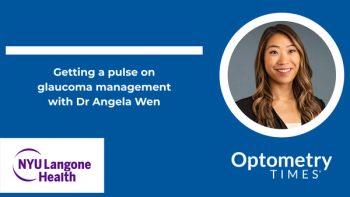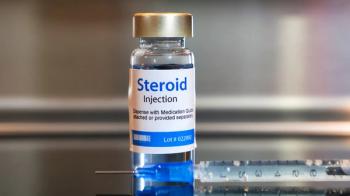
- December digital edition 2020
- Volume 12
- Issue 12
Navigate postop IOP control with wound burping
Most pressure spikes after cataract surgery are transient; however, they can threaten vision
One of the main objectives of the 1-day postoperative visit after cataract surgery is to assess the intraocular pressure (IOP). Fortunately, many, if not all, postop cataract IOP spikes are quite transient and resolve well. However, they can sometimes be serious and threaten vision, which demands treatment.
Ideally, patients with a history of glaucomatous damage can take preventative measures including topical hypotensives prior or extra intraoperative diligence, but if prevention cannot take place, intervention after surgery may be required.
Retained viscoelastic
The most common reason for elevated IOP after uncomplicated cataract surgery is retained viscoelastic material, particularly when it occludes the trabecular meshwork.1 Viscoelastic is used intraoperatively to protect the structures of the anterior segment, namely the corneal endothelium. When surgery is concluded, prior to exiting the eye, the visco is usually washed out. Certain types of viscoelastic (cohesives) are more easily aspirated out.
When visco remains in the eye, it can lodge itself in the angle, block aqueous outflow, and cause a dramatic spike in pressure. Elevated eye pressure from this cause can easily exceed 30 mm Hg and typically peaks at 4 to 7 hours, though usually resolves by 24 hours.2,3
Such a pressure, especially in the face of a history of glaucomatous cupping, can be of great concern. In the event that meticulous removal of the visco agent is not possible, or the eye has sustained previous glaucomatous damage, extra diligent postoperative follow-up may be required.
Anterior chamber decompression
There are multiple options for restoring IOP after cataract surgery, and every doctor has their own threshold for method of choice. If the pressure, at 24 hours post-surgery, measures <30 mm Hg, often topical hypotensives are the only treatment required. If the pressure is much higher, usually between 30 mm Hg and 40 mm Hg, many would consider an oral diuretic and carbonic anhydrase inhibitor like acetazolamide or methazolamide. If the IOP is refractive to those treatments, the eye has previous glaucomatous damage, or the IOP is >40 mm Hg, the approach may necessitate physical intervention.
In this case, the release of viscoelastic and aqueous from the paracentesis site, otherwise known as anterior chamber decompression, or “wound burping,” is an option.
This procedure is performed outside of the operating room, in the examination room with the patient seated at the slit lamp. The patient’s eye is anesthetized with topical proparacaine or lidocaine, and the IOP is checked. The paracentesis site is then identified, which is typically superior or inferior, 60 to 90˚ away from the main wound and is usaully 1 mm wide.4 It may be easier to identify the exact paracentesis location with fluorescein dye, especially as there is often mild epithelial staining overlying the site for at least the first 24 hours.
Some advocate for a drop of antibiotic or topical antiseptic (like Betadine) prior to procedure. The posterior lip of the paracentesis site is gently depressed using a 50 g needle or a cotton-tipped applicator, allowing a few drops of fluid to escape. Fluorescein dye allows for better visualization of the aqueous exiting the wound as a positive Seidel test.
A topical antibiotic is then instilled and the IOP re-checked 10 to 15 minutes after the procedure.
Typically, the IOP is reduced immediately and significantly after wound burping. If the optic nerve had previously sustained significant damage, or the IOP was very high (>50 mm Hg) the patient can be made to wait for another IOP measurement 25 to 30 minutes later. Often, patients are sent home with adjunctive therapy of topical hypotensives as an additional support measure.
Pros and cons
An abrupt release of fluid from the eye, as any procedure, has both pros and cons. Some research has demonstrated that burping a wound decreases the IOP only transiently, and so adjunctive treatment either topically or orally is almost always necessary.3
Aqueous suppressants such as alpha agonists (brimonidine), beta-blockers (timolol), or carbonic anhydrase inhibitors (acetazolamide or methazolamide if orals, or dorzolamide or brinzolamide if topicals) are preferred classes.1 Prostaglandin analogues (latanoprost, bimatoprost) that increase uveoscleral outflow are less effective.3 If the IOP is quite refractory, or the eye has been previously compromised, a combination of agents may be required after the wound burping.
Regardless of agent used, the eye should be examined within 24 hours after the release of aqueous and the management options re-assessed. Patients should be cautioned on increased redness, pain, or loss of vision in the intervening time.
Luckily, the majority of patients undergoing cataract surgery will experience transient and non-visually significant increase in IOP.1,3 Many normal eyes will not require treatment, though those with compromised optic discs or extraordinarily high pressures may require topical, oral or procedural IOP lowering. Wound burping can help to relieve high pressure in a rapid manner and is a useful in-office option.
References
1. Lewis R. Managing Postoperative Pressure Spikes. Cataract Refr Surgery Today. Available at: https://crstoday.com/articles/2008-jul/crst0708_17-php/. Accessed 11/20/20.
2. Higashide T, Sugiyama K. Use of viscoelastic substance in ophthalmic surgery - focus on sodium hyaluronate. Clin Ophthalmol. 2008 Mar;2(1):21-30.
3. Tranos P, Bhar G, Little B. Postoperative intraocular pressure spikes: the need to treat. Eye (Lond). 2004 Jul;18(7):673-9.
4. Devgan U. Corneal phaco incisions require careful construction for successful cataract surgery. Ocular Surg News. Available at: https://www.healio.com/news/ophthalmology/20120620/corneal-phaco-incisions-require-careful-construction-for-successful-cataract-surgery. Accessed 11/20/20.
Articles in this issue
almost 5 years ago
New ways to keep dry eye patients comfortable in contact lensesalmost 5 years ago
ODs look back on 2020almost 5 years ago
Cataract surgery 2020 updateabout 5 years ago
Long-term follow-up of angiod streaksabout 5 years ago
Can AI rescue physicians from EHR woes?about 5 years ago
How to handle dry eye follow-up visitsabout 5 years ago
Quiz: Know the ocular effects of eyelash growth serumsabout 5 years ago
Know the ocular effects of eyelash growth serumsabout 5 years ago
Quiz answers: Know the ocular effects of eyelash growth serumsabout 5 years ago
How to manage orbital fracturesNewsletter
Want more insights like this? Subscribe to Optometry Times and get clinical pearls and practice tips delivered straight to your inbox.
















































.png)


